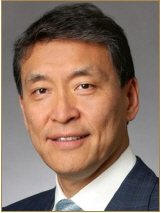
In this paper, Samuel et al. [1] reviewed a single-surgeon experience in treating patients with radiculopathy and myelopathy and also utilized the 2015 and 2016 National Surgical Quality Improvement Program (NSQIP) database to evaluate the outcomes of arthroplasty for patients with myelopathy. In their single-surgeon experience, they found that myelopathy patients were improved at 6 weeks but not at 2 weeks based on their Neck Disability Index and modified Japanese Orthopaedic Association (mJOA) scores. The NSQIP database study showed that the myelopathy patients had longer operative times and lengths of stay, with no increase in perioperative complication rates.
The weaknesses of this study lie in the 2 databases used. A single-surgeon study is critically dependent upon the surgeon performing the study. What may be true for one surgeon is not necessarily generalizable to the average surgeon. So results may vary, depending upon who is performing the operation. In addition, it is highly likely that some of the lack of differences between the radiculopathy and myelopathy groups are due to the small sample size that is likely underpowered. For example, there were 11 radiculopathy patients (91.7%) in the 1-level group and 1 (8.3%) in the 2-level group, vs. 10 myelopathy patients (66.7%) in the 1-level group and 5 (33.3%) in the 2-level group. Yet, the p=0.12 suggests that there was no difference. Clearly, this is highly likely to be underpowered. The weaknesses of a national database study are also well-recognized. They include the inability to control for variables, the completeness of the database, the accuracy of the data, as well as the severity of the morbidity. In addition, NSQIP only measures the outcome out to 30 days postoperatively, so only 4 and not 6 weeks.
Despite the above weaknesses, it is likely that the findings of the authors are based in reality. In theory, there is no reason why myelopathy should not respond to arthroplasty. As long as the myelopathy is due to pathology that can be reached behind the disc level and does not extend to behind the vertebral body and there is no instability, it should be amenable to treatment by arthroplasty. Since ossifying diseases such as ossification of the posterior longitudinal ligament or extensive osteophytes are contraindications to arthroplasty, by definition, one is performing arthroplasty on patients with herniated discs with or without minor spondylotic spurs. Once the herniated disc is removed, the myelopathy should theoretically resolve. In fact, this has been born out by several papers on the topic. We have previously published two studies on the topic based on the US FDA-IDE (Food and Drug Administration Investigational Device Exemption) studies, which were prospective, randomized, controlled and multicenter studies that the authors of the present study cite. As the authors have summarized, those studies demonstrate the efficacy and safety of arthroplasty in appropriate patients with myelopathy. One must always bear in mind, however, that the key word is ŌĆ£appropriate.ŌĆØ Only patients without instability who have myelopathy due to soft disc herniations with or without minor spurs are good candidates for arthroplasty.






























